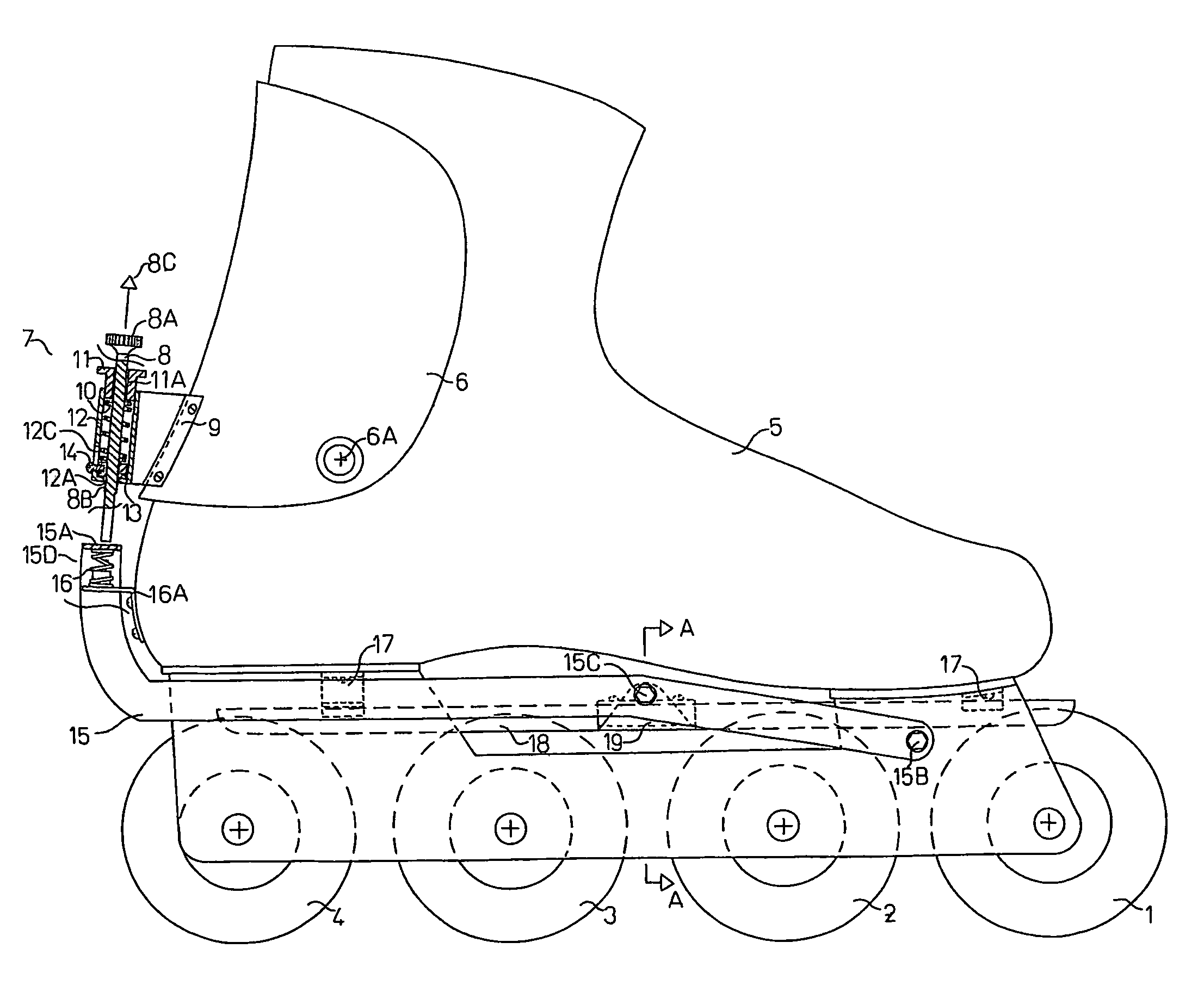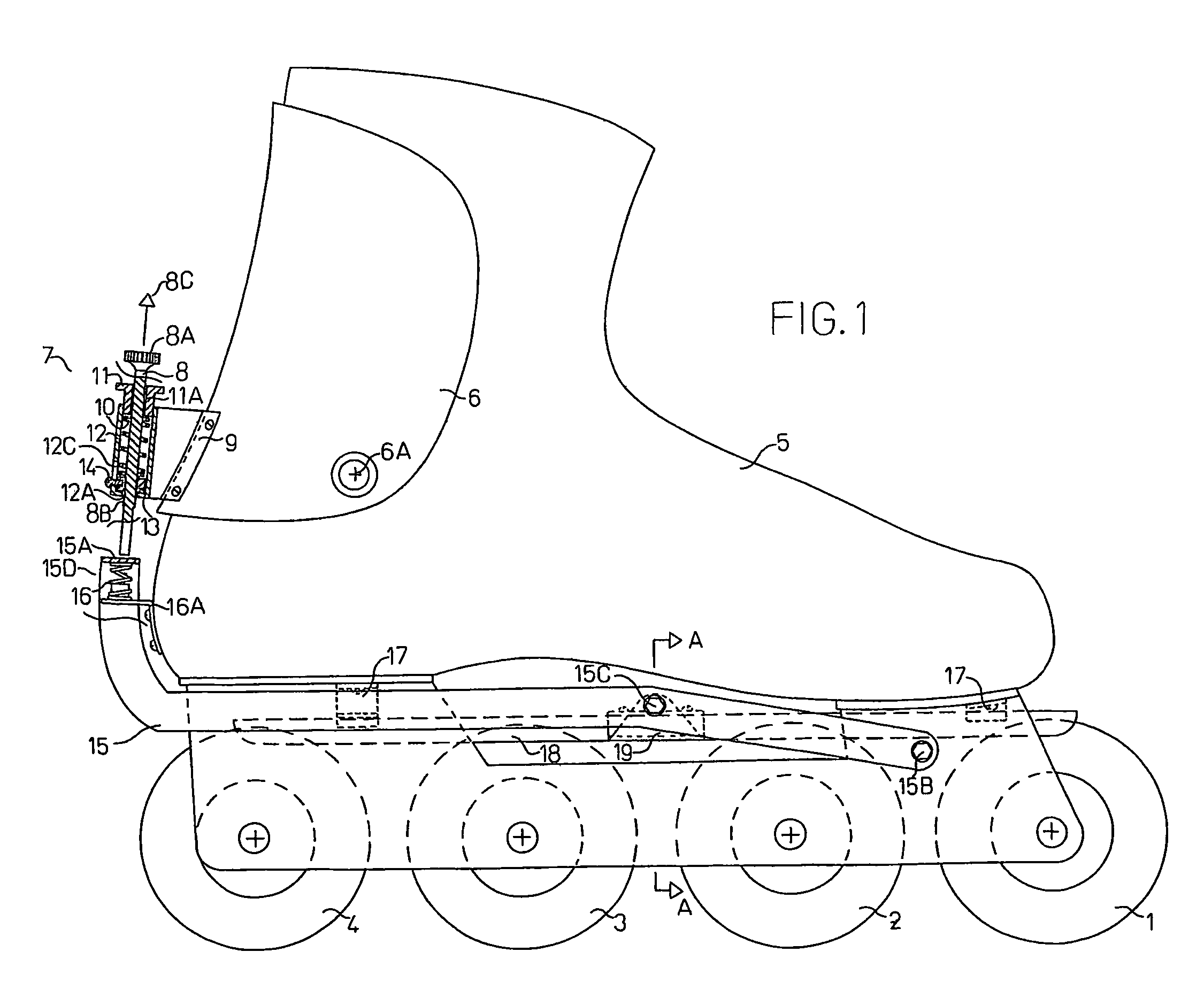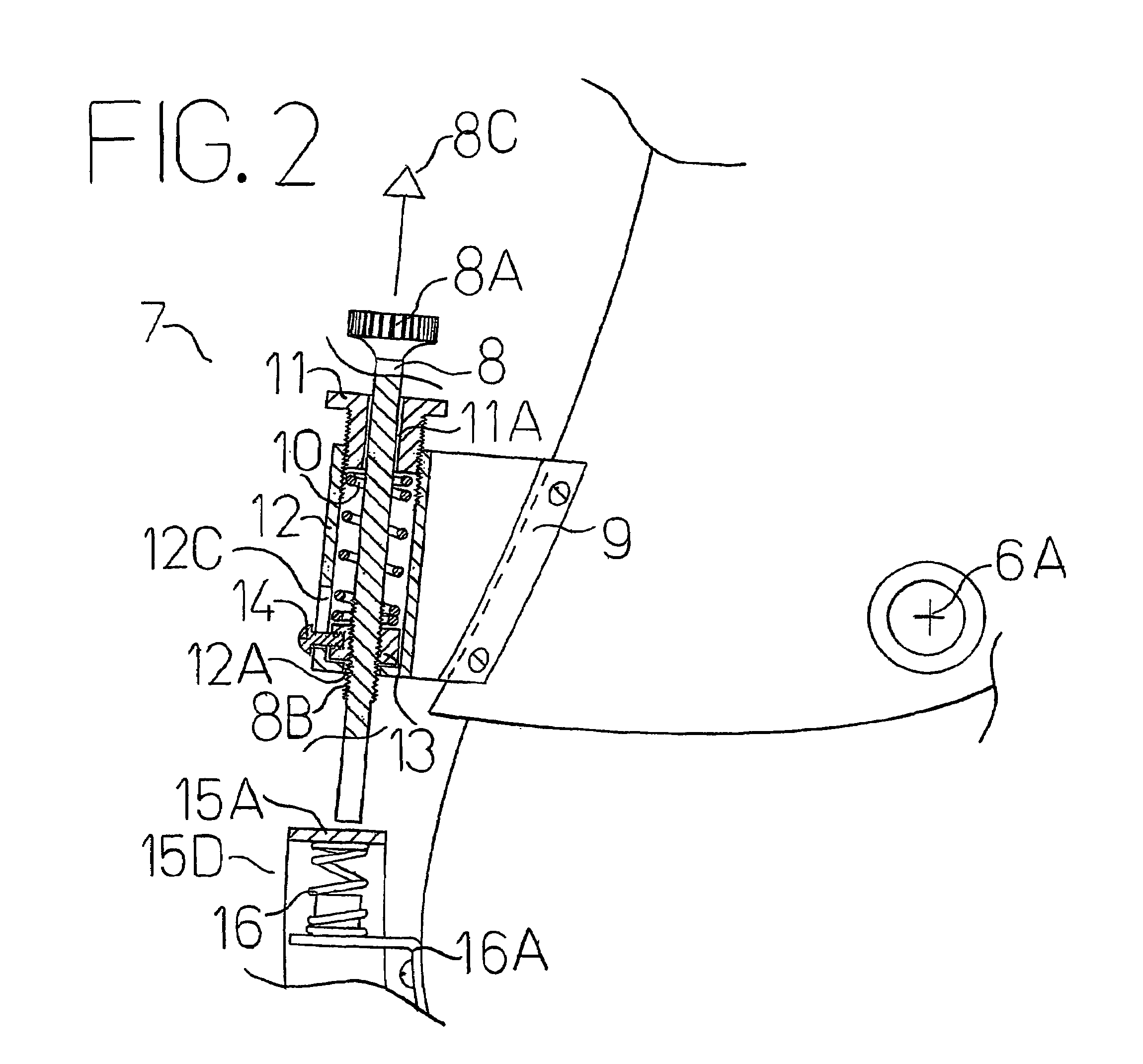Four wheel mechanical brake system for inline skates
a brake system and inline skate technology, applied in the direction of skateboards, roller skates, skating, etc., can solve the problems of increasing instability, rolling on one wheel with one skate becoming an unstable position, and limiting the use of inline skate brakes presently in use, so as to achieve maximum braking
- Summary
- Abstract
- Description
- Claims
- Application Information
AI Technical Summary
Benefits of technology
Problems solved by technology
Method used
Image
Examples
Embodiment Construction
[0018]In FIG. 1, 5 indicates an elevational side view of an inline skate with the herein described “four wheel mechanical brake system” disengaged.
[0019]1, 2, 3 and 4 indicate the skate wheels.
[0020]6 is the pivoting ankle support.
[0021]6A is the pivot point.
[0022]See FIG. 2 for greater clarity of detail of the trigger assembly.
[0023]7 is a lengthwise sectional view of the trigger assembly.
[0024]8 is the trigger rod.
[0025]8A is the adjustment knob of the trigger rod.
[0026]8B is the threaded lower portion of the trigger rod. The arrow 8C indicates the direction of movement of the trigger rod, when the trigger spring 10 becomes somewhat compressed during braking.
[0027]9 is the mounting bracket for the trigger assembly.
[0028]10 is the trigger spring.
[0029]11 is the trigger spring adjustment nut.
[0030]11A is the center hole in the trigger spring adjustment nut that accommodates the vertical movement of the trigger rod 8.
[0031]12 is the tubular spring housing.
[0032]12A is a hole in the b...
PUM
 Login to View More
Login to View More Abstract
Description
Claims
Application Information
 Login to View More
Login to View More - R&D
- Intellectual Property
- Life Sciences
- Materials
- Tech Scout
- Unparalleled Data Quality
- Higher Quality Content
- 60% Fewer Hallucinations
Browse by: Latest US Patents, China's latest patents, Technical Efficacy Thesaurus, Application Domain, Technology Topic, Popular Technical Reports.
© 2025 PatSnap. All rights reserved.Legal|Privacy policy|Modern Slavery Act Transparency Statement|Sitemap|About US| Contact US: help@patsnap.com



